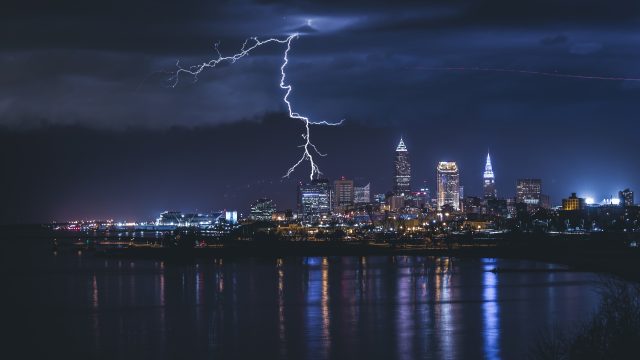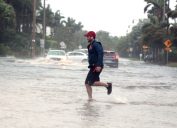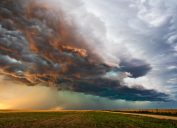How New "Extreme" Thunderstorms and Wind Are Increasing—And Affecting Where You Live
Straight-line winds impact parts of the United States in different ways.
Thunderstorms are obviously awe-inspiring and terrifying (not to mention psychologically tumultuous on your pets). But they're also dangerous. As reported by The Washington Post, experts estimate that thunderstorms are annually responsible for dozens of deaths and an average of more than $2 billion dollars of damage. And recent research indicates that the winds generated by thunderstorms could be getting worse.
There are two broad categories of winds generated by thunderstorms: Straight-line winds are those that don't hail from tornados, as detailed by the National Weather Service. In some cases, they can achieve speeds of more than 100 mph.
According to a 2023 study published in Nature Climate Change, straight-line winds have "intensified over the past 40 years." There's mounting evidence to suggest they're being exacerbated by climate change, as first reported by the Post, though other factors may also be in play.
"While there is some research showing that climate change could be contributing to stronger wind gusts in severe thunderstorms, I'd say the increase likely also has a lot to do with the fact that nowadays we have a very modern, widespread network of reliable weather stations that can accurately measure wind gusts," Ari Sarsalari, a meteorologist for The Weather Company's weather.com, tells Best Life.
Whatever the cause, the effect is the same: Straight-line winds are something to watch out for. Here's how extreme winds from thunderstorms will affect your region.
RELATED: Major Hurricanes Intensifying, New Data Shows—Is Your Region in Harm's Way?
Central U.S.
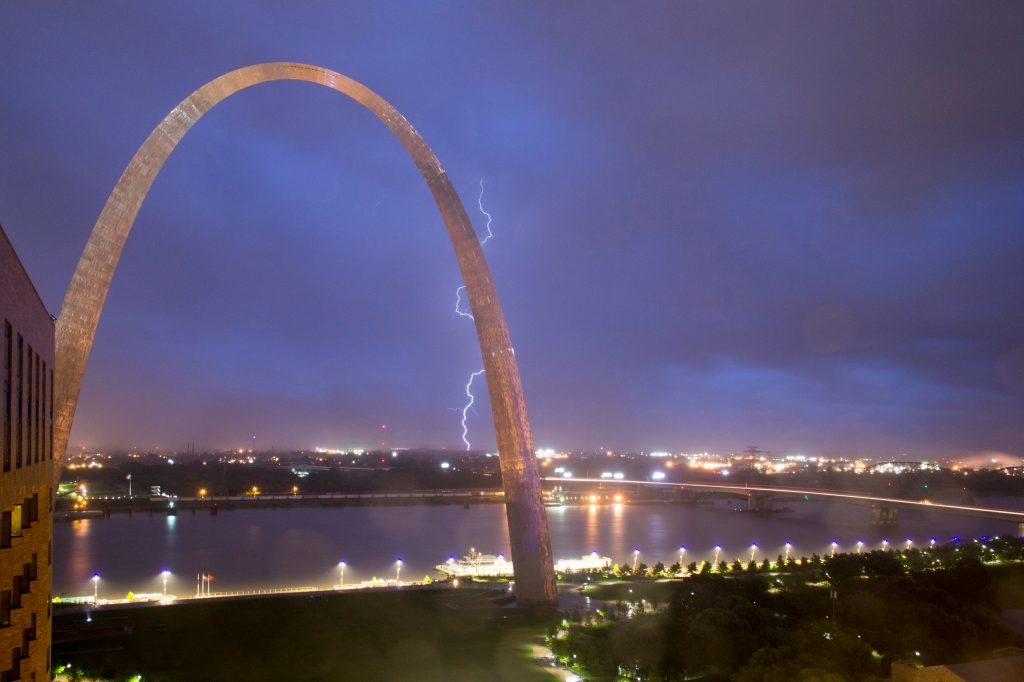
The central United States is ground zero for straight-line winds. In fact, the aforementioned Nature Climate Change study centered its data on the central U.S.—generally agreed to be everything between the Rocky Mountains and the Mississippi River.
There's not a whole lot you can do about any type of weather, no matter where you live. But if you're in the middle of the country, you should make sure your roof and garage door can handle straight-line winds. If you haven't had them looked at in 10 years or more, you may be due for an update.
"The roof is the most common area of damage on a home from severe thunderstorm winds," Ian Giammanco, PhD, lead research meteorologist at the Insurance Institute for Business & Home Safety (IBHS), shares with Best Life. "Around 75 percent of roofs have asphalt shingles and unfortunately, as those shingles age, they become more susceptible to windstorm damage, especially once they are 10 years or older."
RELATED: 39 Facts About Storms That Will Make You Run for Cover.
Southeast
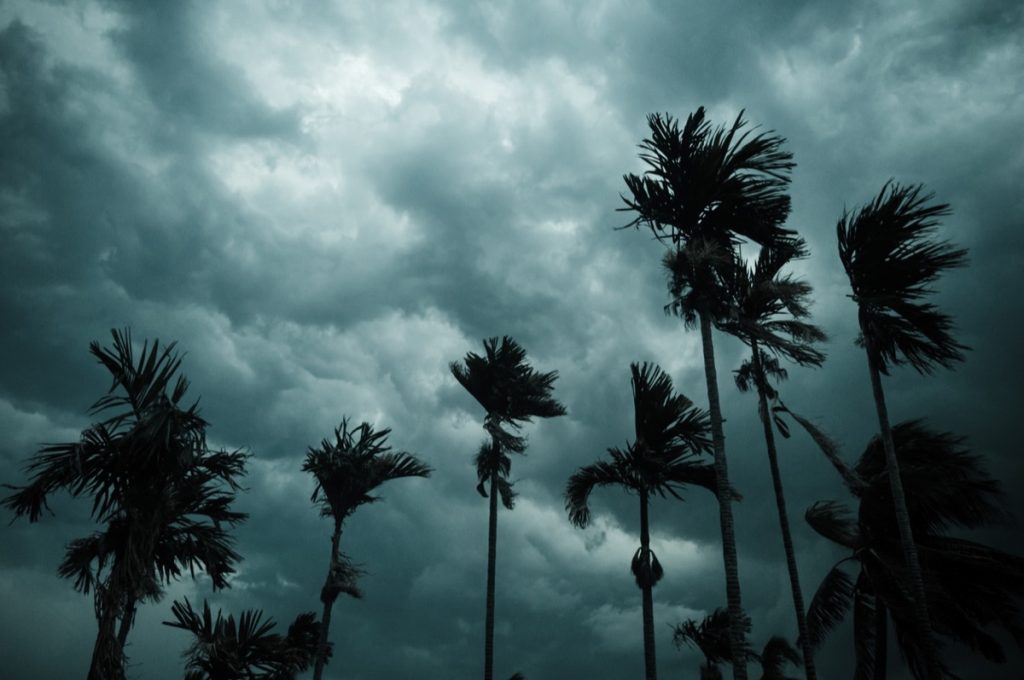
The southeast United States already has to contend with hurricanes—notoriously some of the most damaging and dangerous natural disasters in the country. But for the most part, straight-line winds from extreme thunderstorms don't impact this region, though the farther inland you get, the more likely you are to encounter such weather.
Sarsalari says "parts of the Southeast from the Tennessee Valley into the southern Appalachians" can experience such "extreme winds."
Weather is also not a guaranteed occurrence; El Niño and La Niña years can upend any expectations for regional weather patterns.
"During La Niña years, the deep South may see an increase in thunderstorms during the typical cool season of November through January," Giammanco notes.
RELATED: 10 Signs Our Winter Could Be Brutal, Farmer's Almanac Says.
Northeast and New England

Northerners may have to suffer brutally frigid winters and mercilessly humid summers, but at least there's minimal risk of straight-line winds.
"The far northern tier of the United States doesn't get much severe weather, from northern Minnesota through northern Michigan to northern New England," Sarsalari says.
West Coast and Southwest

If you live on the West Coast, you're probably fine. There are exceptions, of course—namely the "monsoon regions" of Arizona, New Mexico, and southern California, as Giammanco points out—but for the most part, areas west of the Rocky Mountains are less likely to experience thunderstorms and straight-line winds.
"It's not that they never happen, it's just pretty rare," Sarsalari shares.
RELATED: For more up-to-date information, sign up for our daily newsletter.
